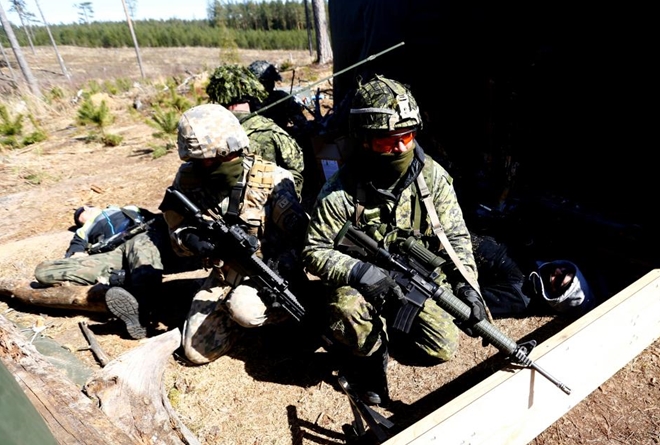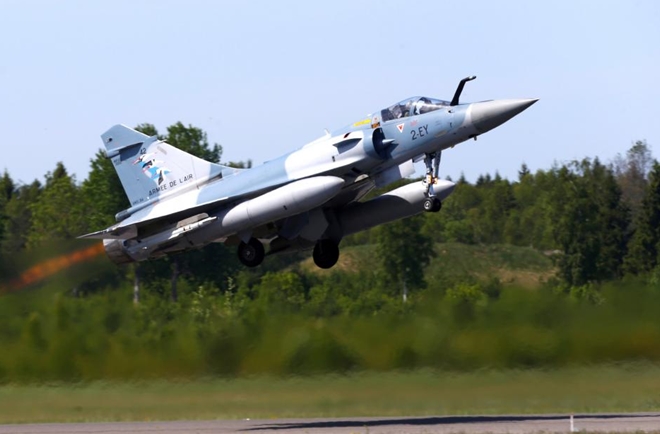U.S. pushes NATO to ready more forces to deter Russian threat
 |
| NATO Secretary-General Jens Stoltenberg and U.S. Secretary of Defence Jim Mattis attend a NATO defence ministers meeting at the Alliance headquarters in Brussels, Belgium, February 15, 2018. REUTERS/Francois Lenoir/File Photo |
U.S. Secretary of Defense Jim Mattis will seek broad agreement for the plan in Brussels on Thursday when alliance defense ministers meet, laying the ground for endorsement by NATO leaders at a summit in July, four U.S. and NATO officials and diplomats told Reuters.
The plan would require NATO to have 30 land battalions, 30 air fighter squadrons and 30 navy ships such as destroyers ready to deploy within 30 days of being put on alert, although the proposal does not discuss specific troop numbers or a deadline for setting up the strategy.
The size of battalions vary across NATO, from 600 to 1,000 soldiers.
This lays down a challenge for European governments, pilloried by U.S. President Donald Trump for slashing military spending after the Cold War, to remedy long-running problems with helicopters and jets that are grounded for lack of parts.
“We have an adversary (Russia) that can move quickly into the Baltics and Poland in a ground attack,” said one senior NATO diplomat who was briefed on the U.S. plans.
 |
| Italian troops of the NATO enhanced Forward Presence (eFP) battle group attend a joint exercise with the Latvian National Guard unit near Daugavpils, Latvia April 12, 2018. REUTERS/Ints Kalnins/File Photo |
“We don’t have the luxury of taking months to mobilize,” the diplomat said, saying the U.S. idea was known as 30-30-30-30.
One U.S. official said the initiative was primarily aimed at countering Russia and fitted with the Pentagon’s 2018 National Defense Strategy, which accuses Moscow of seeking to “shatter the North Atlantic Treaty Organisation.”
Russia’s war games last year, involving what Western officials said were 100,000 troops, also prompted concerns about accidental conflicts that could be triggered by such exercises, or any incursions into Russian-speaking regions in the Baltics.
The Kremlin firmly rejects any such aims and says it is NATO which is the security threat in eastern Europe.
Wrong-footed by Moscow with Russia’s seizure of Crimea in 2014 and its intervention in Syria’s war in 2015, the United States is distrustful of the Kremlin’s public message and wants to be ready for any eventuality.
WHOSE TROOPS?
With more than 2 million troops, NATO’s forces outnumber those of Russia, whose active duty members are around 830,000, according to the International Institute of Strategic Studies, a British-based military think-tank.
Russia’s annexation of Crimea prompted NATO to set up a small, rapid-reaction “spearhead” force and put four battalions in the Baltics and Poland, backed up by U.S. troops and equipment on rotation.
 |
| France's Air Force Mirage 2000-5 fighter takes off during the NATO Baltic Air Policing Mission in Amari military air base, Estonia May 25, 2018. REUTERS/Ints Kalnins/File Photo |
But is unclear how fast the alliance could move large troop numbers to its eastern flank and how long it could sustain them for, with France already stretched in Africa and British cutbacks reducing the size of deployable forces, officials said.
According to a 2016 study by the Rand Corporation, Britain, France, and Germany could each muster a brigade of three or more battalions along with battle tanks and other armor in around a month. But their resources would be badly strained, leaving little capacity for any other conflicts.
Another unknown is how the U.S. ‘30-30-30-30’ proposal would fit in with other initiatives put forward aimed at improving European military combat readiness and to address shortfalls in weaponry and other military assets.
The European Union last December launched a defense pact to develop crisis-response forces and work together to develop new helicopters and ships. French President Emmanuel Macron aims to set up a new French-led European “intervention force”.
“We only have a certain amount of forces in Europe, and they cannot be committed to every military proposal,” a second senior NATO diplomat said.

